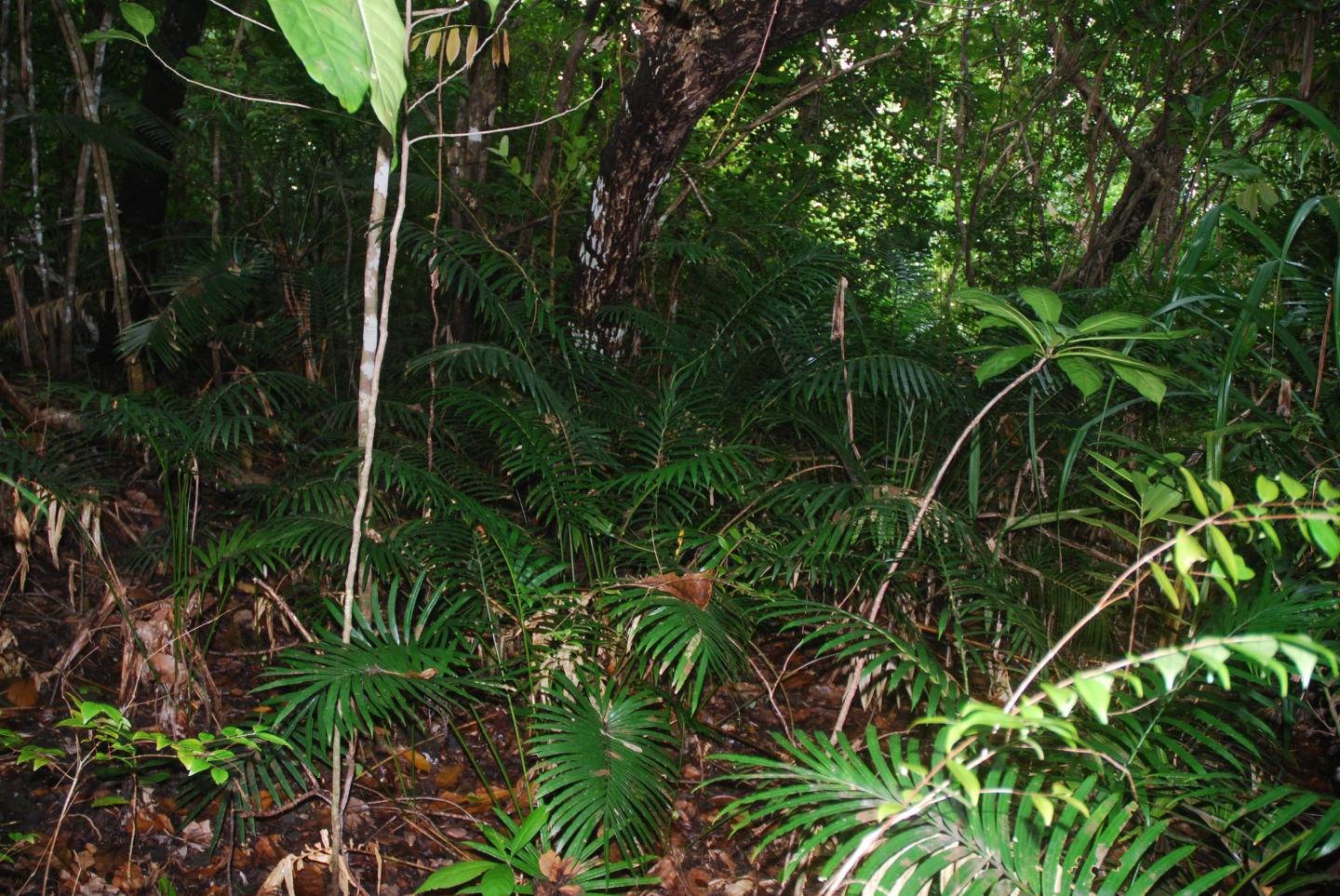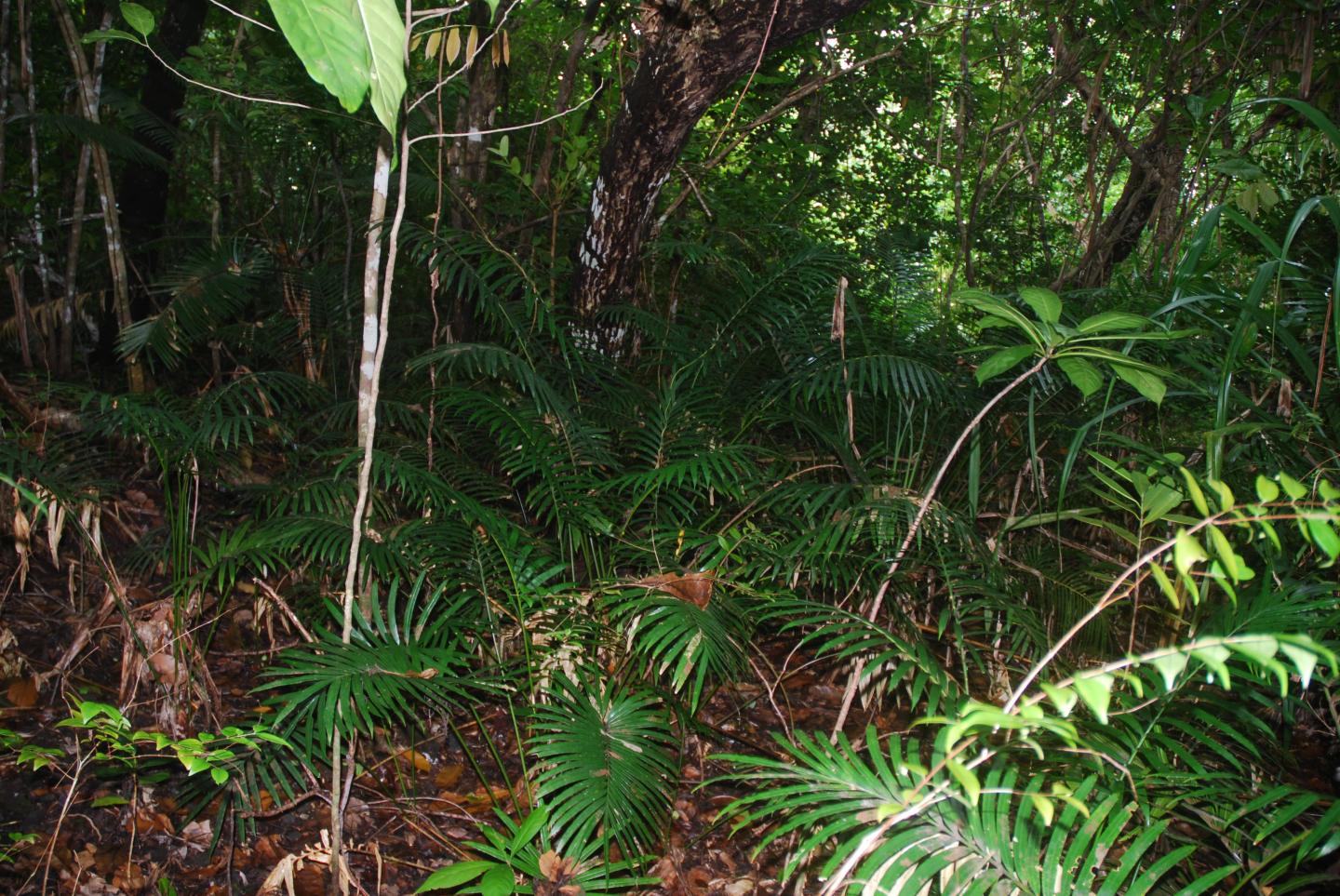
Credit: Thomas Marler
The living cycad species are among the world's most threatened plant groups, but are also among the world's least studied plant groups. The need for a greater understanding of basic physiology of cycads has been discussed for decades, yet to date the needed research is lacking.
Recent reports of how gymnosperms are more sluggish than angiosperms in the photosynthetic use of sunflecks in forest understory settings prompted an article from the University of Guam that appears in the current issue of the journal Plant Signaling & Behavior.
"The list of species used to represent gymnosperms in the conclusions on sunfleck use were restricted to conifers," said author Thomas Marler. "But the world's gymnosperms are also represented by three other groups of plants, and these were not included in the database that was used to formulate conclusions."
The Cycadidae, Ginkgoidae, and Gnetidae groups of plants are also gymnosperms, and collectively they contain close to 400 described species. Guiding principles are needed to improve the representation and relevance of these plants in contemporary research agendas.
According to Marler, the addition of more descriptive research targeting cycad species is welcomed regardless of the approach. But the adherence to protocols that ensure species relevance would improve the outcomes. Since forest canopy traits define sunfleck qualities, the experimental protocols for studying sunfleck use by newly studied species should be defined from the natural habitats of each species. Moreover, the behavior of cultivated plants often differs from that of plants in natural settings, and moving from the current level of minimal knowledge to a level of adequate knowledge may be reached most rapidly by studying these plants within their native range rather than in botanic gardens. A phenomenon called context dependency is also pertinent to the needed expansion of cycad research. Do environmental factors such as drought influence how a cycad plant capitalizes on the ephemeral access to sunflecks?
Attempts to link phylogenetic subsets of plants more closely to the broader global research agenda need to be accurate. Adding more physiology research to cycads would greatly improve our understanding of how the world's plants effectively utilize the pulses of sunlight that punctuate the forest sub-canopy.
###
Media Contact
Olympia Terral
[email protected]
http://www.uog.edu
Related Journal Article
http://dx.doi.org/10.1080/15592324.2017.1334030





